Frieze Sculpture is back – here's what to see in Regent's Park
Frieze Sculpture has returned to Regent's Park. As London gears up for Art Week, here's what to see on the fringes
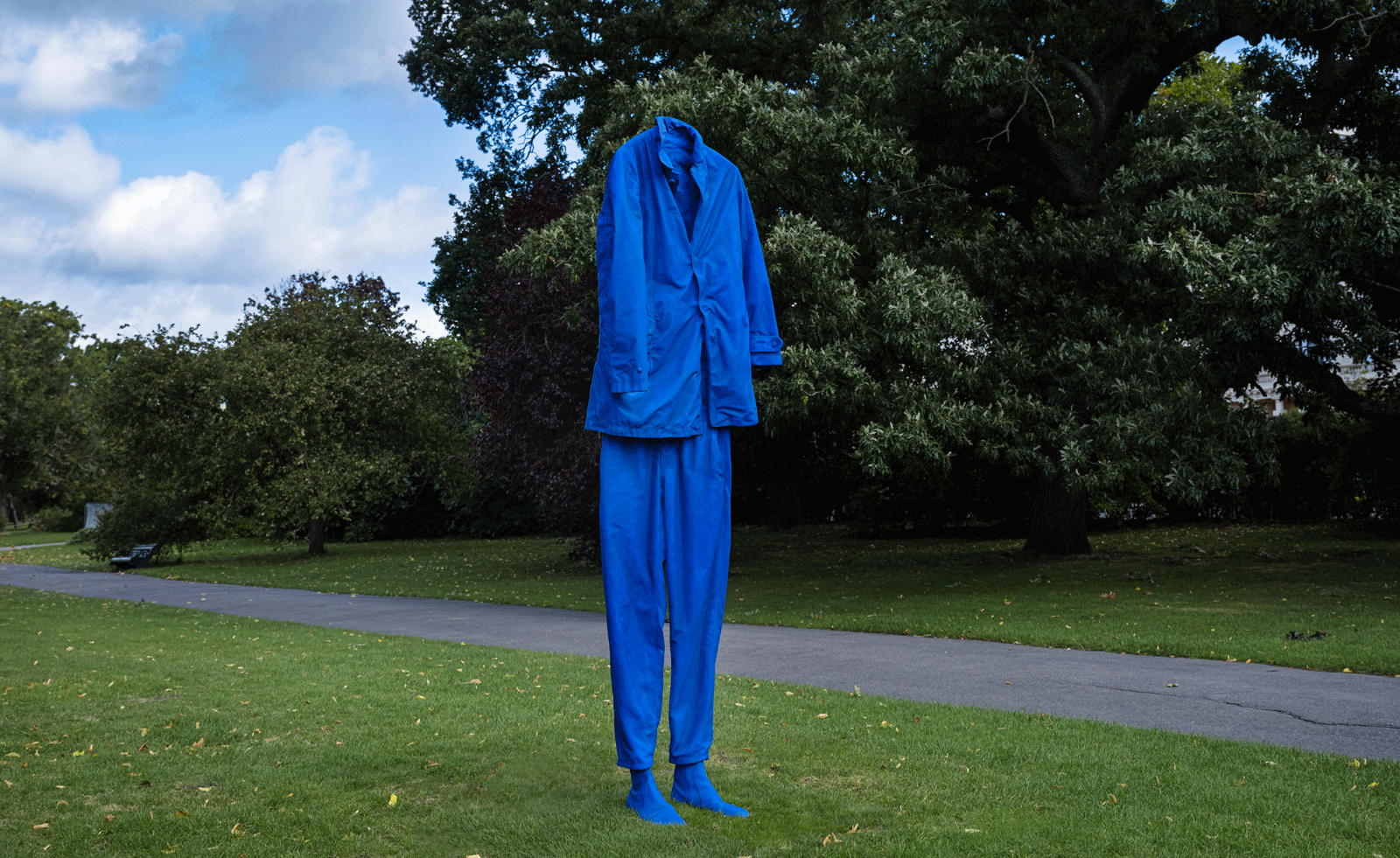
This year’s edition of Frieze Sculpture in Regent's Park, London, brings together works by 14 artists from around the globe. Curated by Fatos Üstek, it’s the first time the exhibition has followed a theme, and the result is a stronger sense of cohesion, where works seem to speak not only to their surroundings but to each other.
‘In the Shadows’ invites artists to explore ideas of absence and ancestry, loss and transformation. Many of the works reflect on ecological collapse and the pressures of contemporary life, but there is also a sense of joy and hope in the conjuring of folkloric figures and effigies, an effort to connect with nature and ourselves. Here are five of our favourites.
Requiem (The Last Call) by Reena Saini Kallat
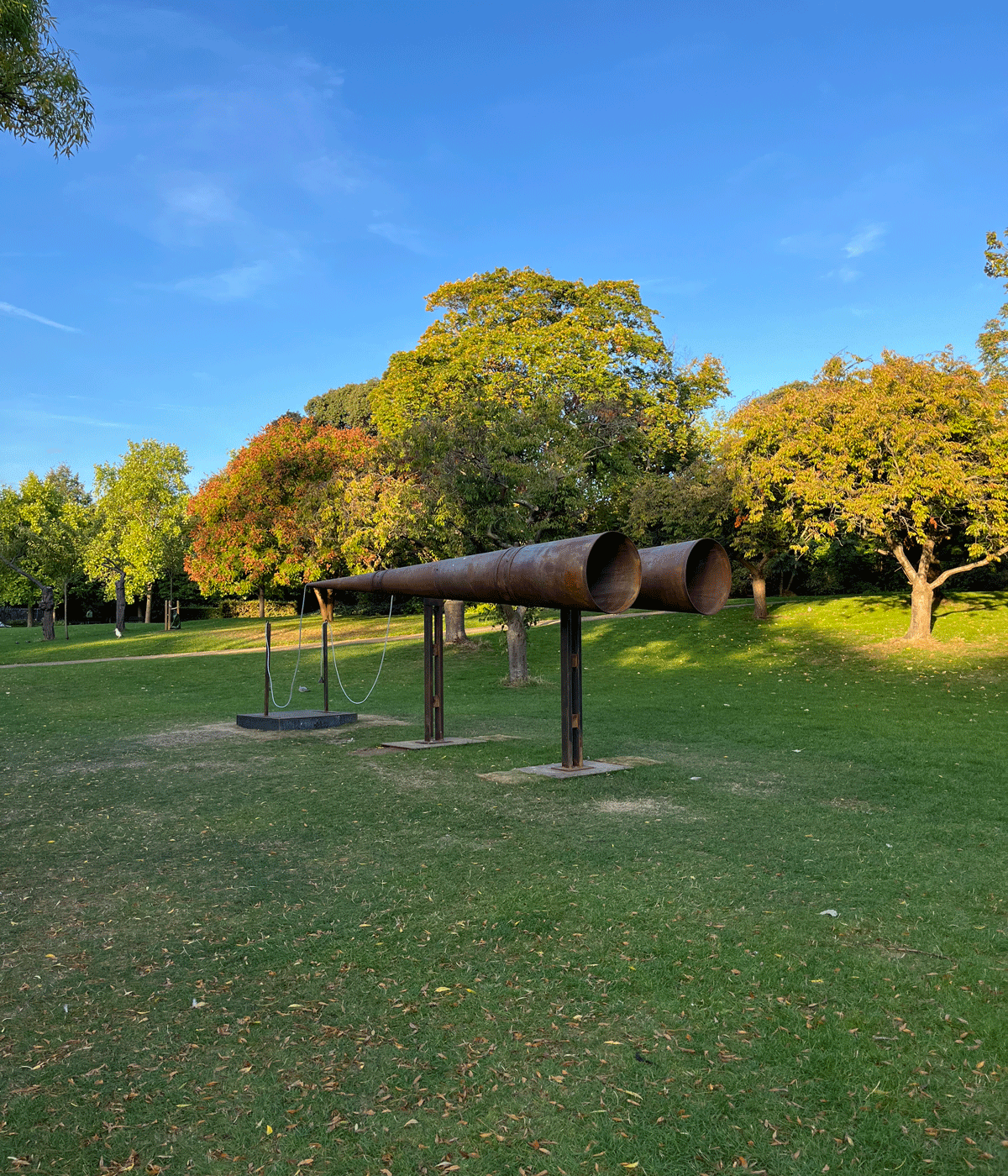
Kallat invites visitors to step onto a platform to listen to the calls of bird species that have become extinct, playing out through two horn-like structures. The horns were inspired by early 20th-century wartime listening devices that were used for tracking the sound of enemy aircraft, but they also resemble hunting horns or a pair of giant binoculars, depending on how you approach them. It’s an incredibly beautiful and moving piece – as I stood there, a bird in a nearby tree seemed to be calling out, responding to the echoes of the lost song.
When I Remember Through You by Grace Schwindt
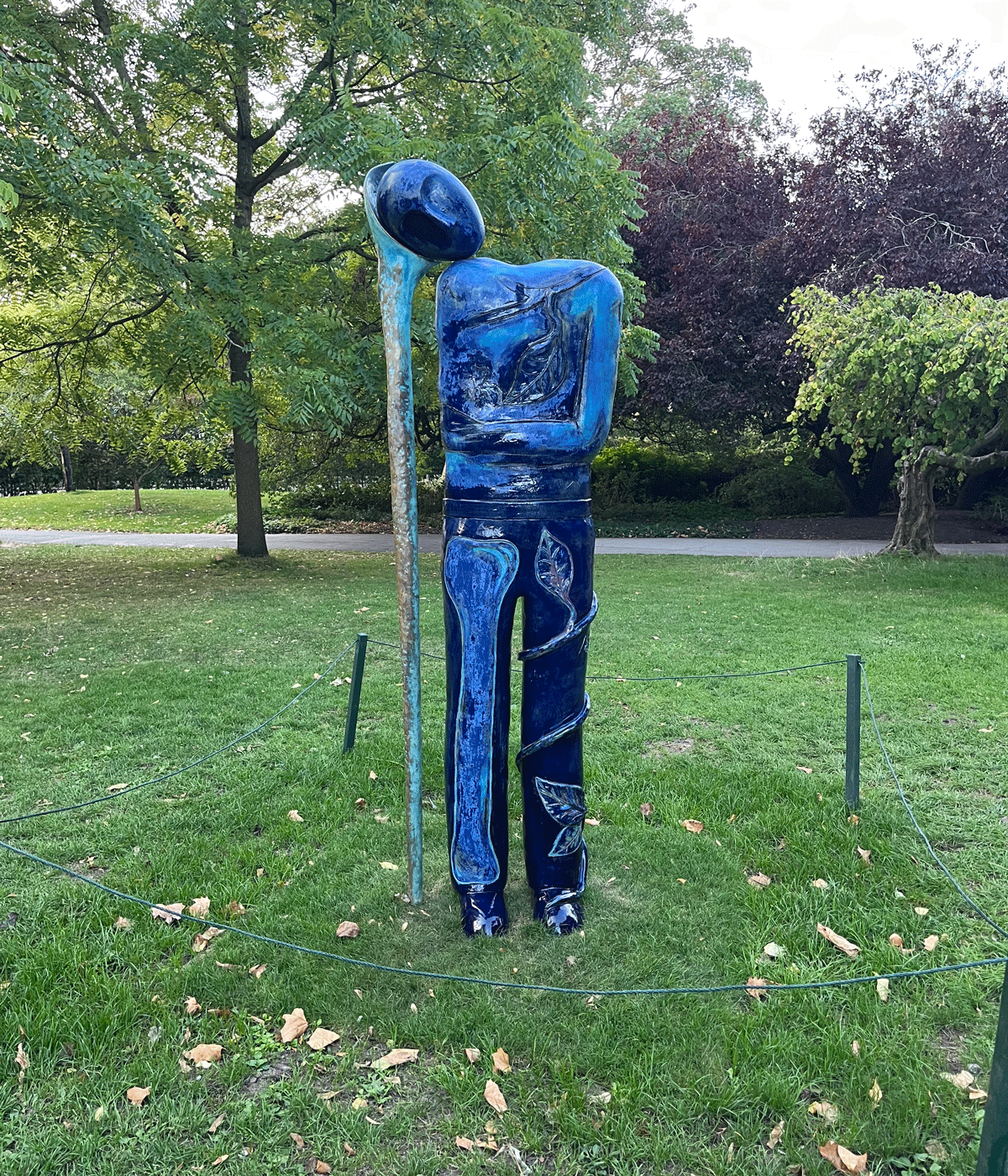
Schwindt’s ceramic and bronze figure is caught in a process of transformation or decomposition – emerging from or returning to the earth. The head, fallen to one side, is cradled by a structure seemingly growing up out of the ground, while vines wrap up around one of the legs. It has both an uncanny and ancient presence, as if it had always been part of the park’s landscape.
Auguries (Lament) by Andy Holden
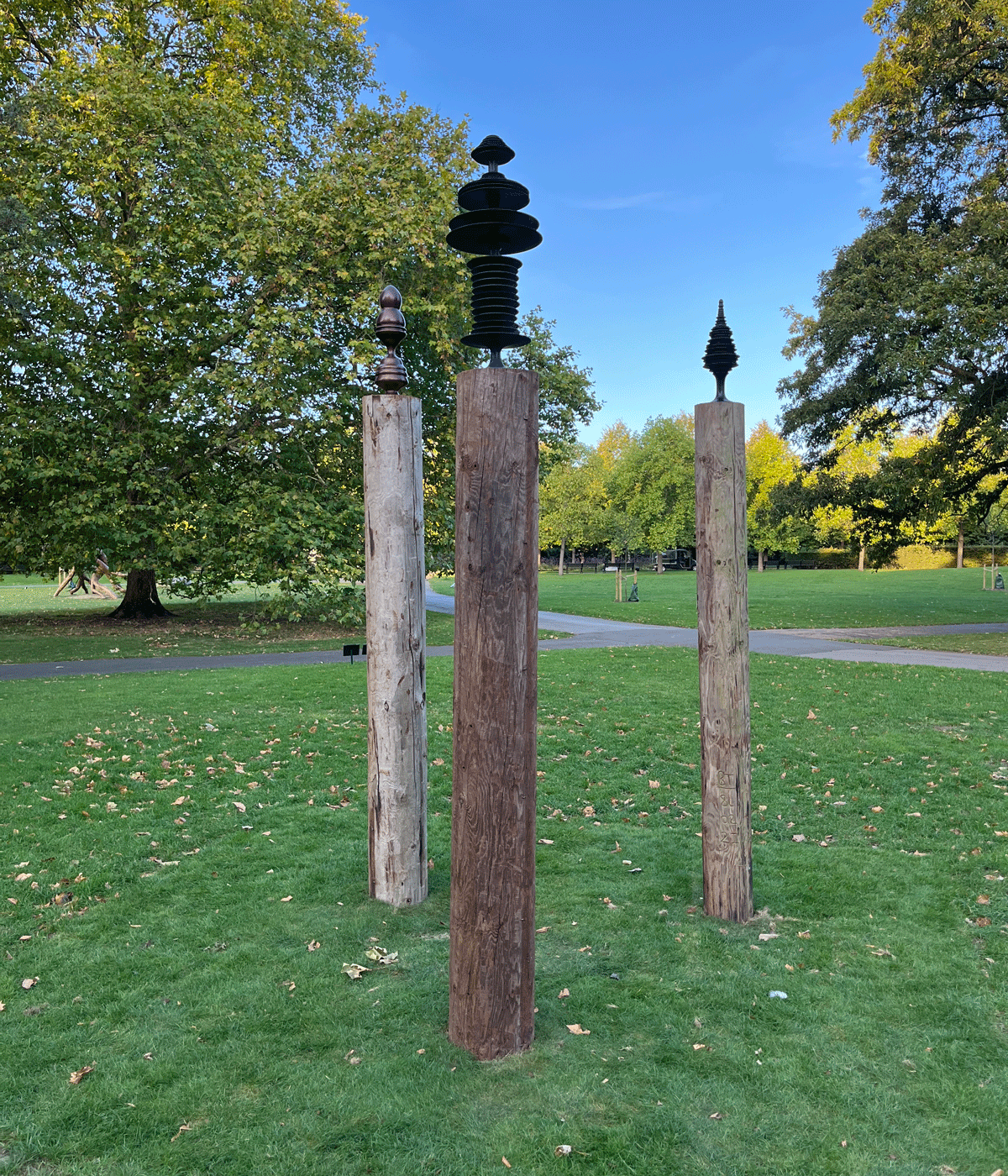
Auguries (Lament) is a trio of totemic wooden sculptures positioned on telegraph poles. Each piece visually translates the song of a vanishing bird – the cuckoo, the nightingale and the crow, who isn’t endangered but serves here as a messenger – captured through 3D technology. It feels more dystopian than Kallet’s Requiem – a vision of a silenced landscape.
Fibredog by Assemble
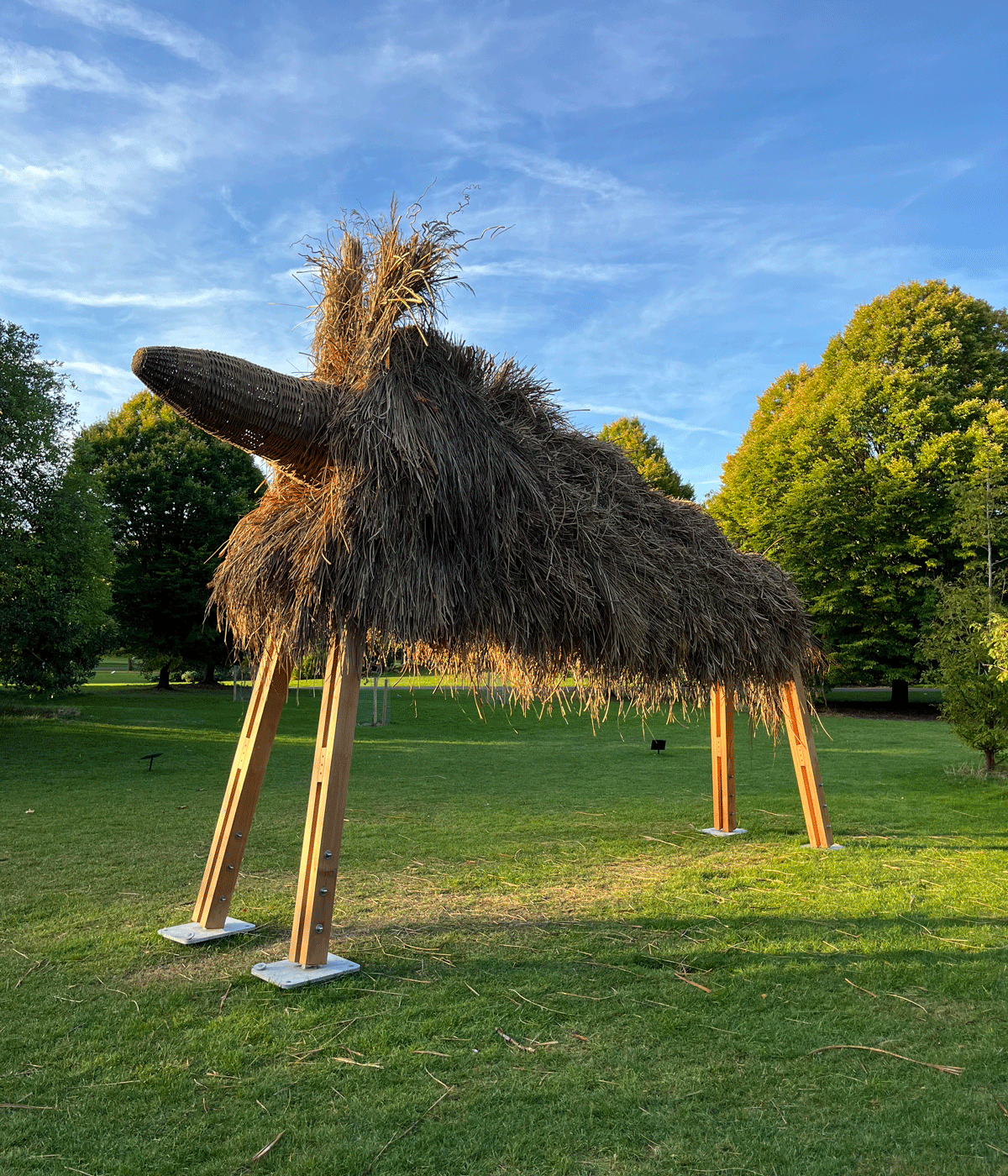
Within the context of a ‘serious’ art exhibition, a giant dog made out of straw, thatch and timber, bearing a striking resemblance to a shaggy, long-nosed lurcher, feels intentionally silly and therefore a lot of fun. It’s a work, made by architecture, art and design collective Assemble in collaboration with UniFor and Plinth, that harks back to folkloric customs and community-made art, to dancing around fires and drinking mead. When you stand beneath the dog’s belly you can smell the straw.
Ghost (Substitutes) by Erwin Wurm
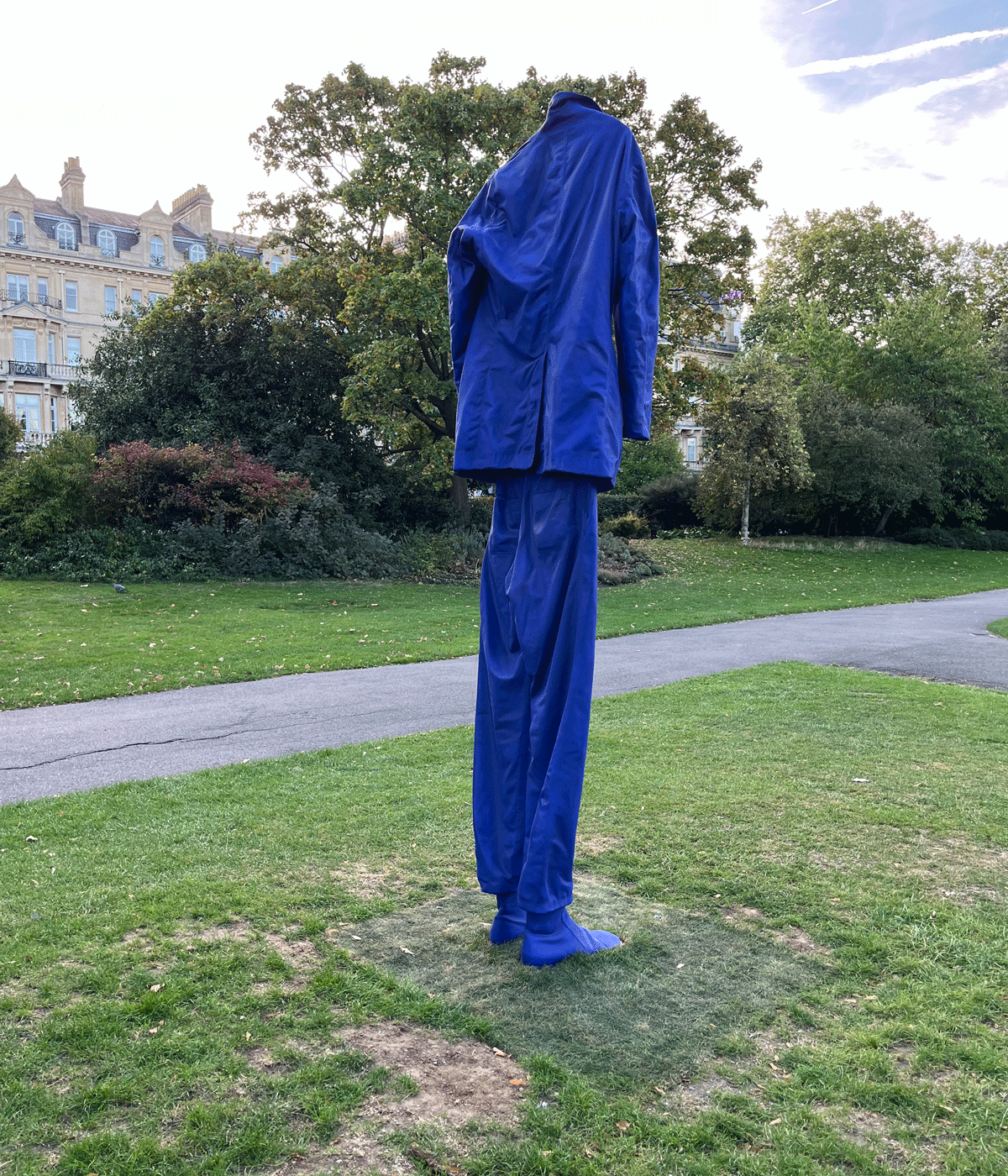
Wurm’s electric blue sculpture of an empty, crumpled suit is one of the largest in the exhibition. Positioned between the trees, just in front of one of the grand buildings that surround the park, it looks like an anti-monument to consumerism and macho culture. Its feet are firmly planted but if you look closely, it seems as if it’s on the verge of keeling over – it made me think of the hundreds of suited people silently commuting to and from work, of the impossible demands our professional lives put on us. Later, when I looked across the lawn, a man was lying at its feet, doing press-ups.
Receive our daily digest of inspiration, escapism and design stories from around the world direct to your inbox.
Frieze Sculpture is in Regent's Park until 2 November
Millie Walton is a writer, editor and curator based in Somerset. Her writing has appeared in The Guardian, Burlington Contemporary, Flash Art, Plaster and Wallpaper, among other titles
-
 100 George Street is the new kid on the block in fashionable Marylebone
100 George Street is the new kid on the block in fashionable MaryleboneLondon's newest luxury apartment building brings together a sensitive exterior and thoughtful, 21st-century interiors
-
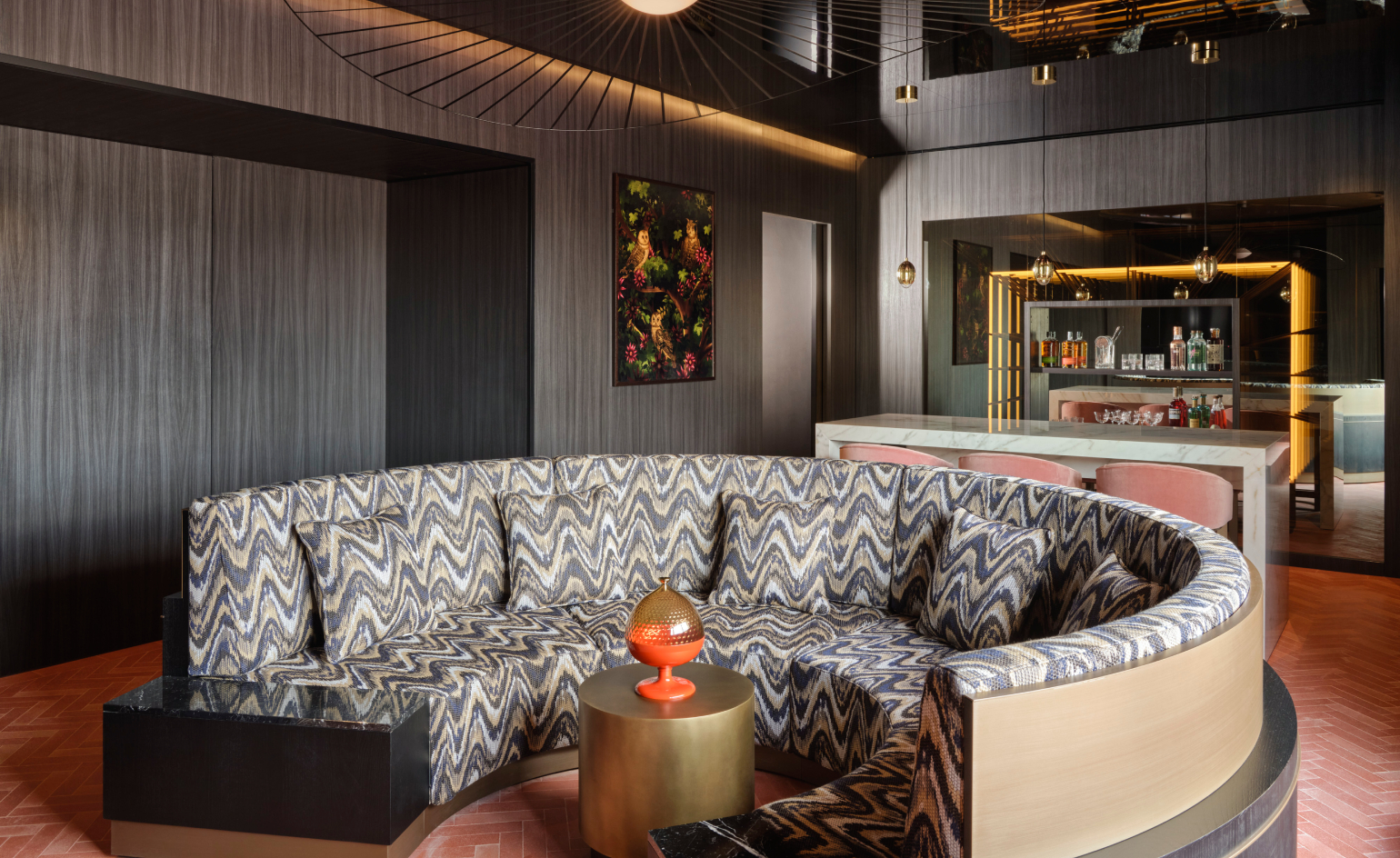 Experience the cradle of the Renaissance in a new light at Florence’s W hotel
Experience the cradle of the Renaissance in a new light at Florence’s W hotelFlorence’s palazzi, basilicas and baptistries groan with history. But the city’s new W hotel poses an alternative perspective – one that is distinctly modern
-
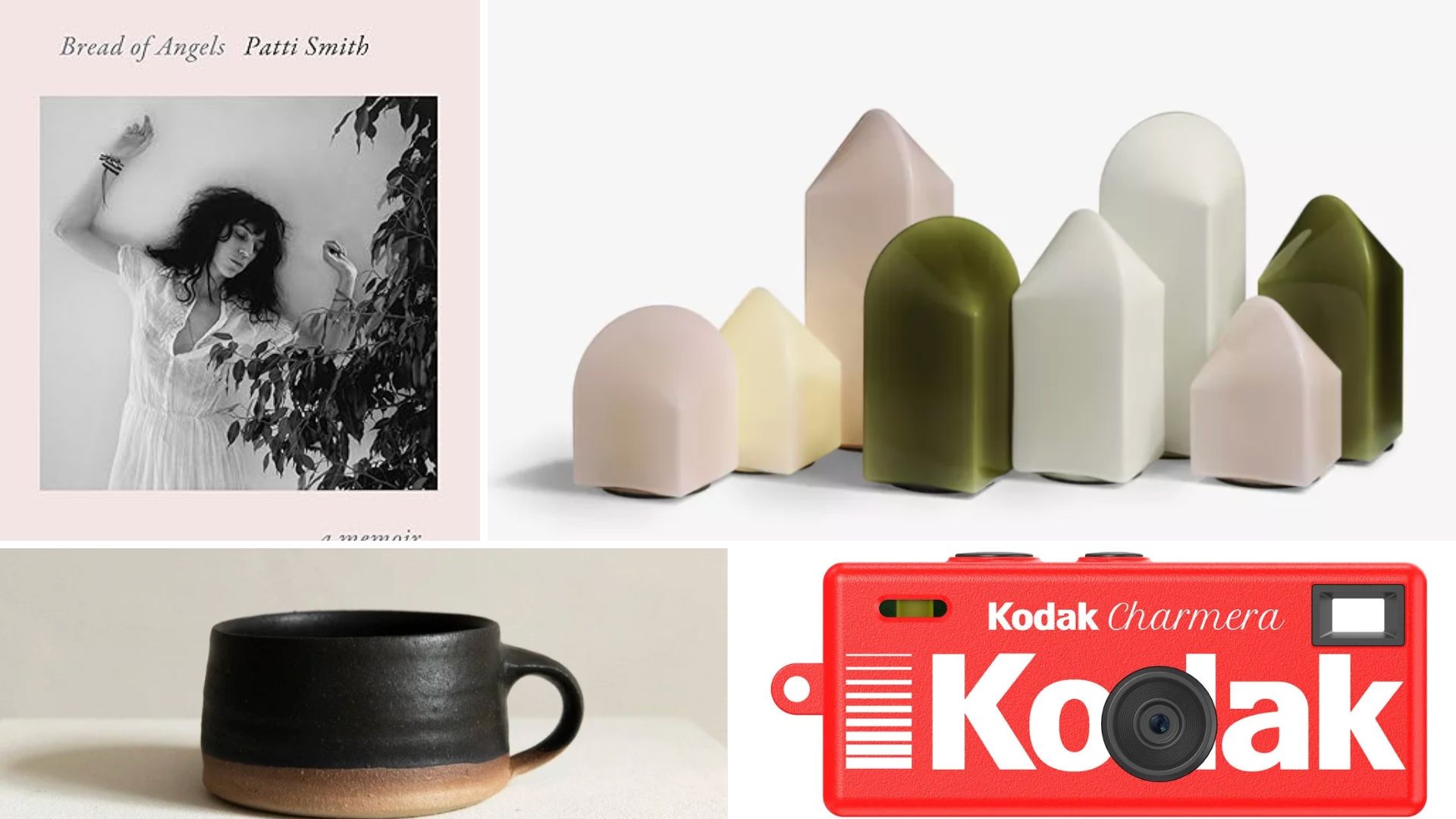 Wallpaper* Gift Guides: What our director of digital content, Charlotte Gunn, has on her wishlist this year
Wallpaper* Gift Guides: What our director of digital content, Charlotte Gunn, has on her wishlist this yearFrom the year's most-anticipated music biography to stacks of vinyl, these goodies will help you unwind and unplug
-
 Out of office: The Wallpaper* editors’ picks of the week
Out of office: The Wallpaper* editors’ picks of the weekIt’s been a week of escapism: daydreams of Ghana sparked by lively local projects, glimpses of Tokyo on nostalgic film rolls, and a charming foray into the heart of Christmas as the festive season kicks off in earnest
-
 Wes Anderson at the Design Museum celebrates an obsessive attention to detail
Wes Anderson at the Design Museum celebrates an obsessive attention to detail‘Wes Anderson: The Archives’ pays tribute to the American film director’s career – expect props and puppets aplenty in this comprehensive London retrospective
-
 Meet Eva Helene Pade, the emerging artist redefining figurative painting
Meet Eva Helene Pade, the emerging artist redefining figurative paintingPade’s dreamlike figures in a crowd are currently on show at Thaddaeus Ropac London; she tells us about her need ‘to capture movements especially’
-
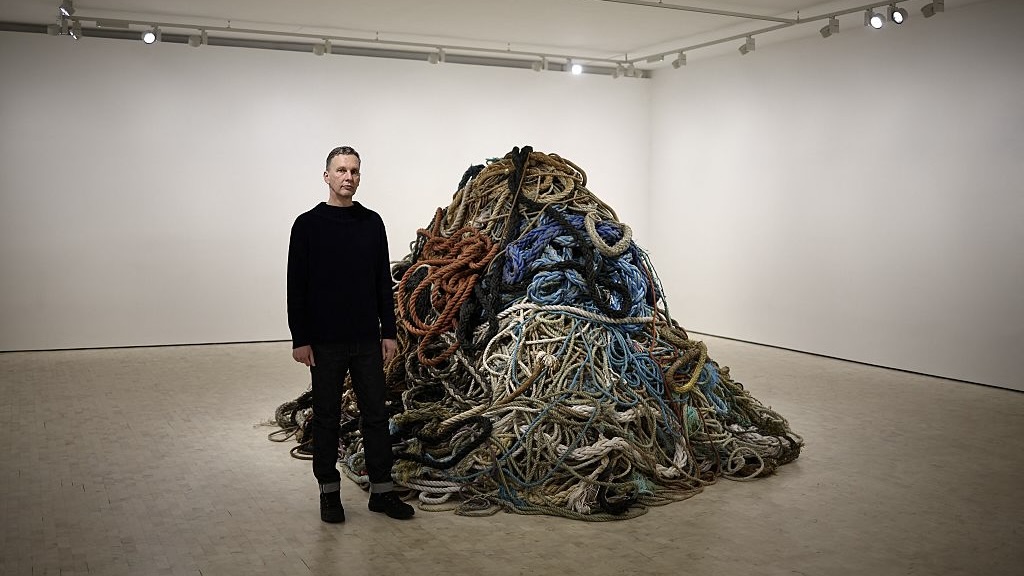 David Shrigley is quite literally asking for money for old rope (£1 million, to be precise)
David Shrigley is quite literally asking for money for old rope (£1 million, to be precise)The Turner Prize-nominated artist has filled a London gallery with ten tonnes of discarded rope, priced at £1 million, slyly questioning the arbitrariness of artistic value
-
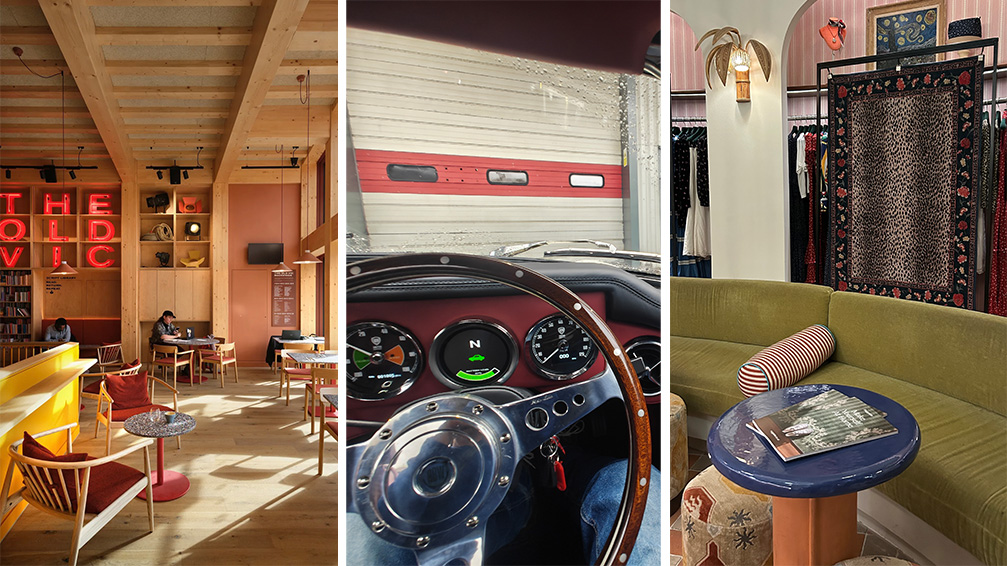 Out of office: The Wallpaper* editors’ picks of the week
Out of office: The Wallpaper* editors’ picks of the weekThe rain is falling, the nights are closing in, and it’s still a bit too early to get excited for Christmas, but this week, the Wallpaper* team brought warmth to the gloom with cosy interiors, good books, and a Hebridean dram
-
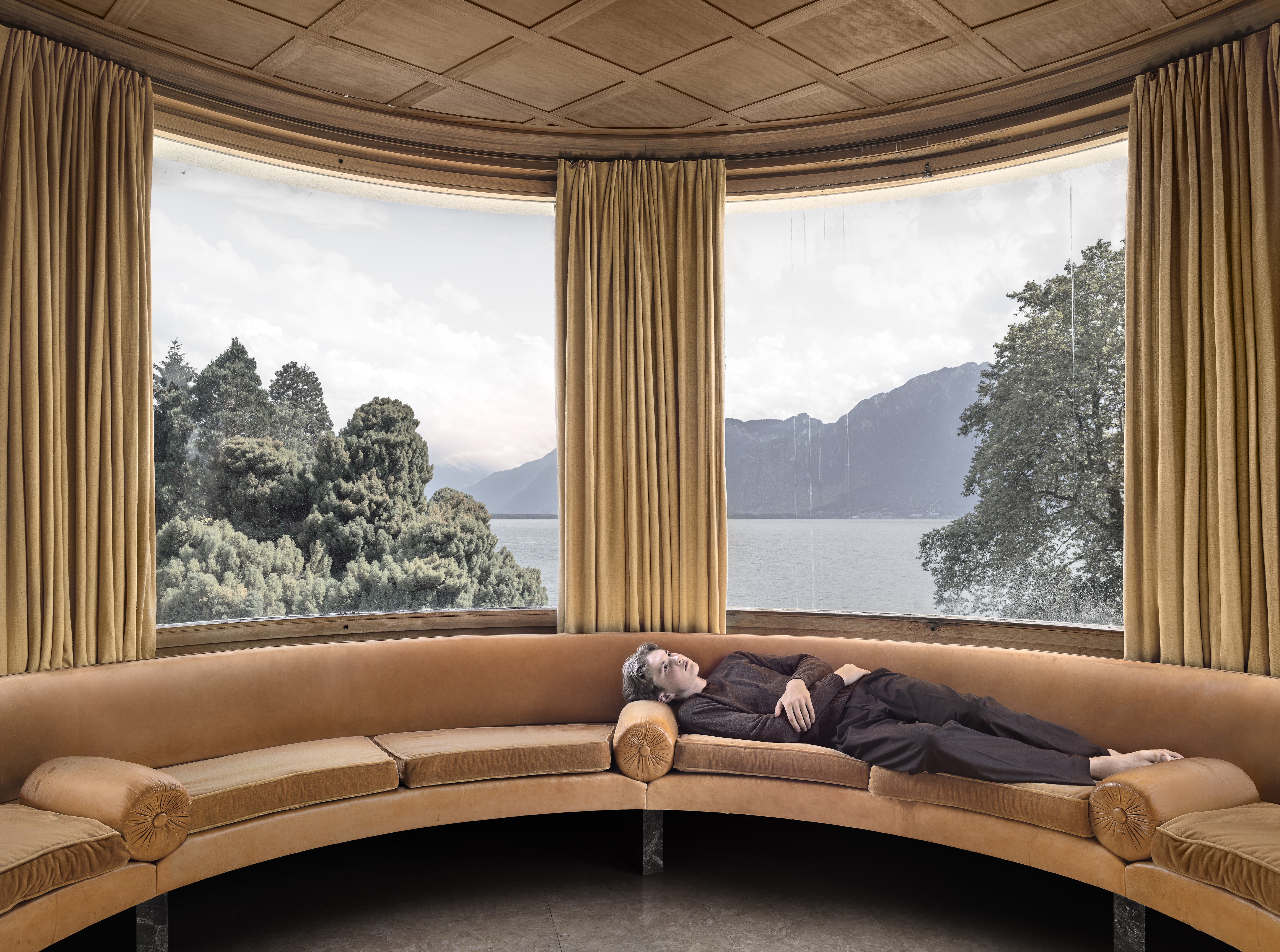 A former leprosarium with a traumatic past makes a haunting backdrop for Jaime Welsh's photographs
A former leprosarium with a traumatic past makes a haunting backdrop for Jaime Welsh's photographsIn 'Convalescent,' an exhibition at Ginny on Frederick in London, Jaime Welsh is drawn to the shores of Lake Geneva and the troubled history of Villa Karma
-
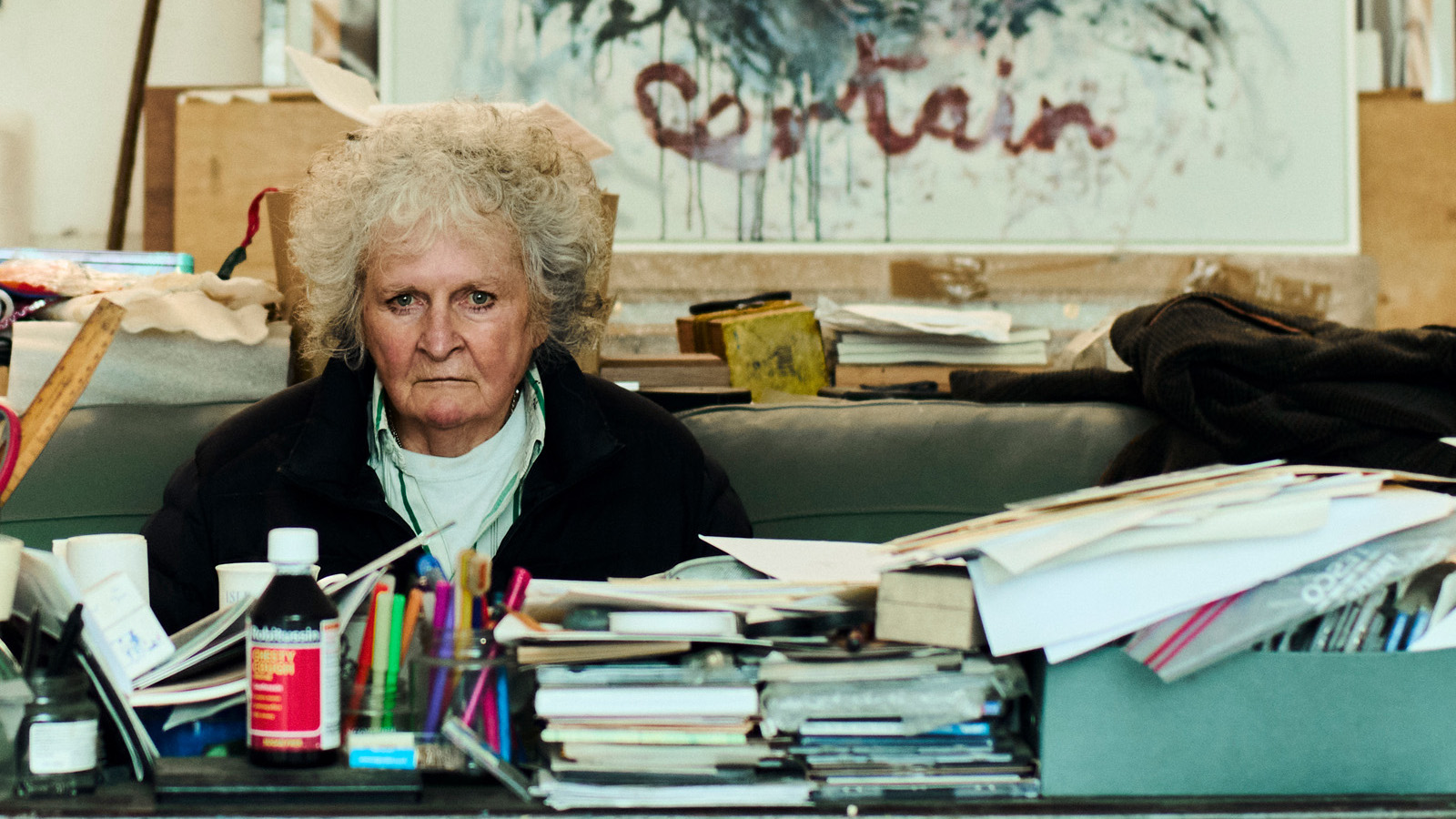 Maggi Hambling at 80: what next?
Maggi Hambling at 80: what next?To mark a significant year, artist Maggi Hambling is unveiling both a joint London exhibition with friend Sarah Lucas and a new Rizzoli monograph. We visit her in the studio
-
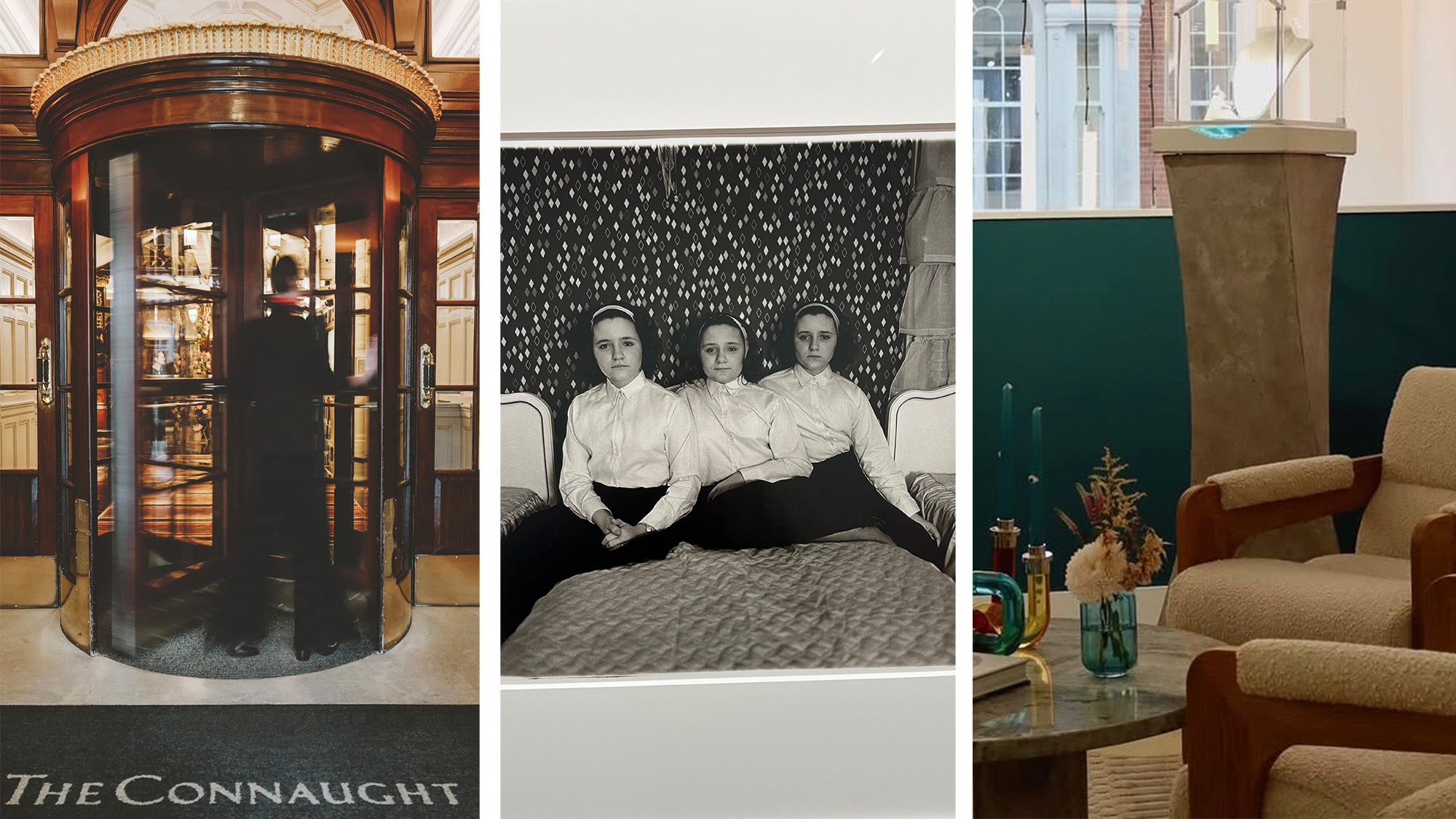 Out of office: The Wallpaper* editors’ picks of the week
Out of office: The Wallpaper* editors’ picks of the weekThis week, the Wallpaper* editors curated a diverse mix of experiences, from meeting diamond entrepreneurs and exploring perfume exhibitions to indulging in the the spectacle of a Middle Eastern Christmas